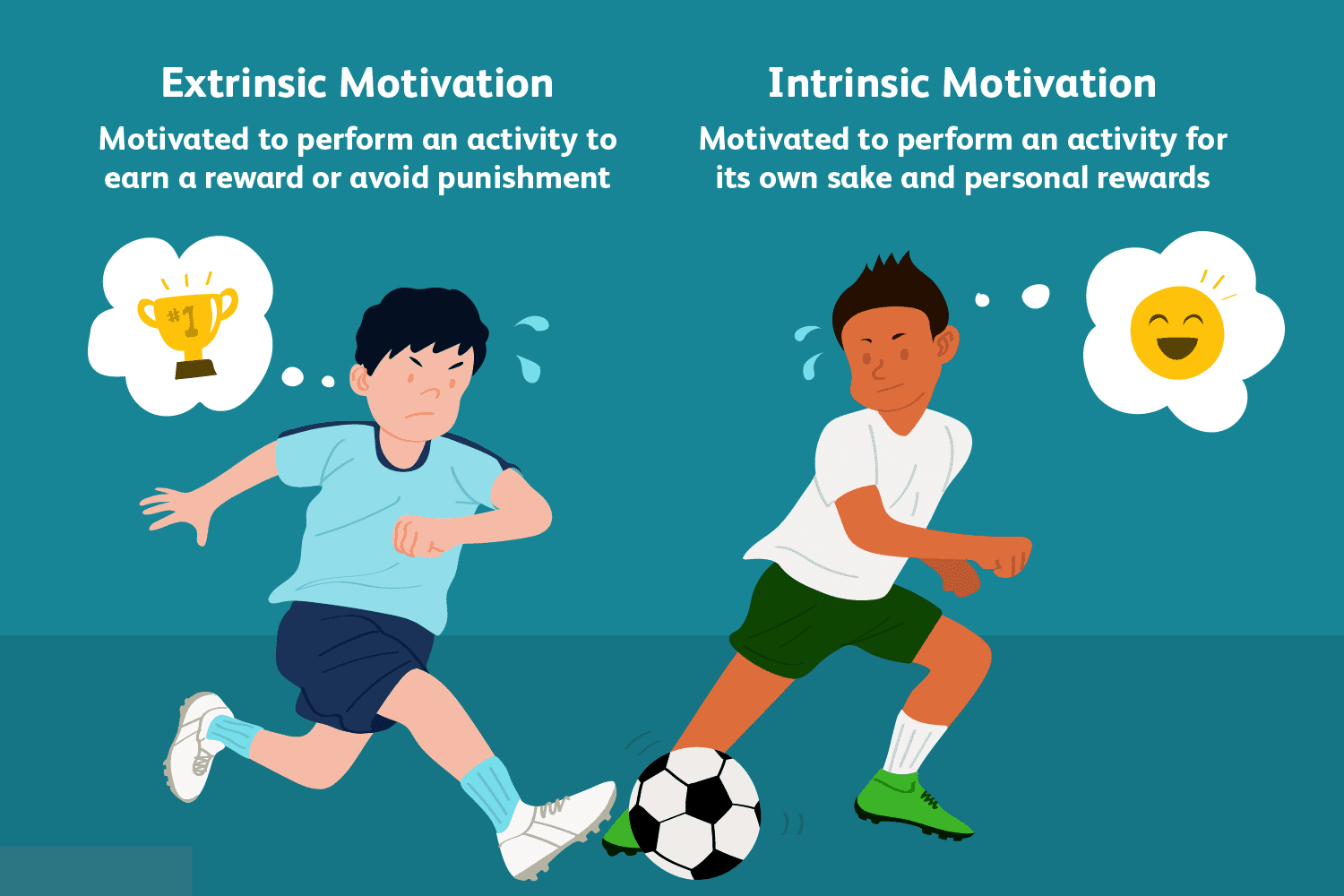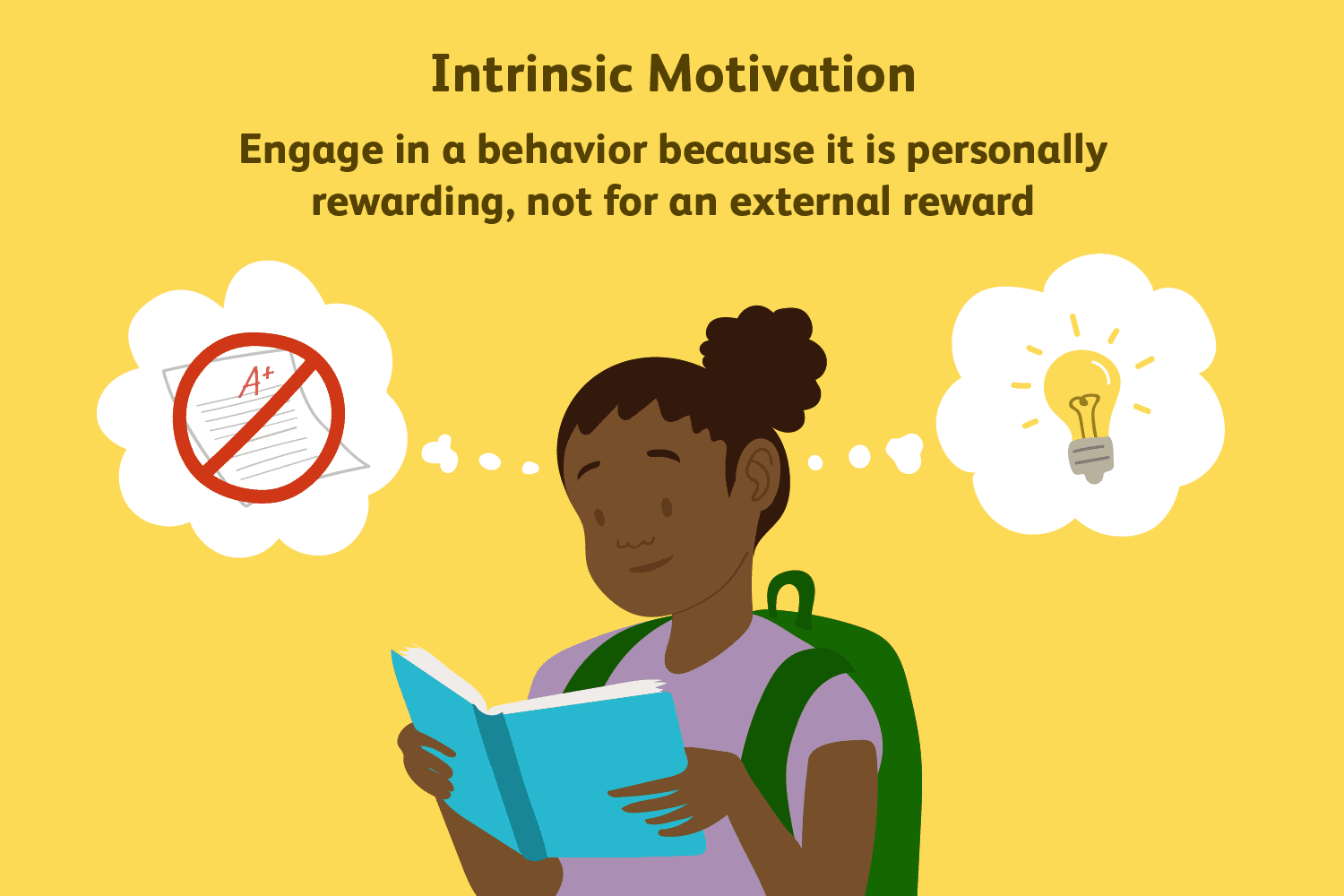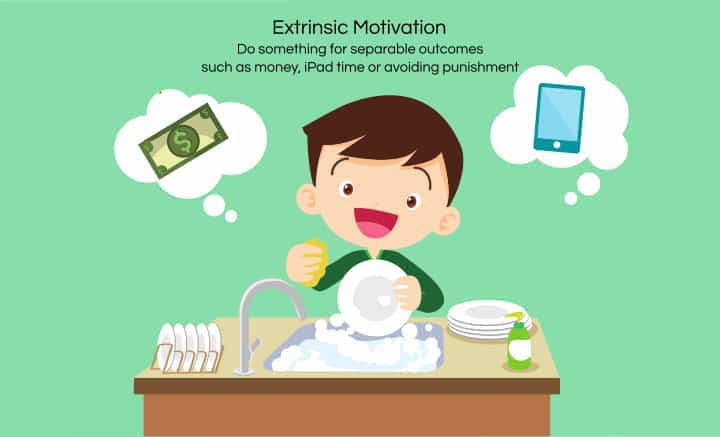“I have so many great ideas if only I could get motivated.”
“I do well with deadlines, but I can’t seem to motivate myself.”
“I can’t seem to lose weight unless I have someone constantly checking on me and I can’t afford a personal trainer.”
“I would perform better if I could make myself practice more.”
Do any of these statements sound familiar? These are commonly the individual’s need for extrinsic motivation. That is the inability to achieve the desired goal unless someone else provides the momentum to pursue them. Without the development of intrinsic motivation, individuals have a great deal of difficulty achieving success. If you examine successful people, one of the main differences is their ability to motivate themselves. They are not necessarily more intelligent, or have better ideas; they are just able to pursue a goal to its conclusion.
What is the difference between intrinsic and extrinsic motivation?
Extrinsic motivation is an external form of motivation. For example, if your boss sets a deadline and your bonus is tied to it, that is a very clear form of extrinsic motivation. In fact, this example includes two extrinsic motivators: your boss’s expectations and the bonus.
Intrinsic, however, is an internal form of motivation. You strive towards a goal for personal satisfaction. You may even work towards a long-term reward such as participating in a competition, but the primary motivator is internal.

You may have heard the story about the old man who lived next to an empty lot. Every afternoon children would play baseball in the lot. The old man, annoyed by all the commotion, created a plan to stop the children from using the lot. One day he told them that he would pay each of them $5 every day they came to the lot. They thought he was a little nuts but were thrilled to be paid to do something they did anyway. After a few days, he told them he couldn’t afford to pay the $5 but asked if they would accept $1. They grumbled a little but agreed to take the $1. A few days more passed, and he approached them with an apology telling them that he wouldn’t be able to pay them anymore but hoped that they would still play in the lot anyway. The children responded by refusing to play in the “stinking” lot if he wasn’t going to pay them.
This story is a good example of changing intrinsic to extrinsic. At first, the children played in the lot for the enjoyment of it. However, once the man started paying them, their motivator became the money. Once that motivator disappeared, they no longer had the desire to play in the lot.
How does normal motivation develop?
Children naturally have intrinsic motivation when born. They explore their environment and discover their abilities for enjoyment or personal satisfaction. However, these explorations quickly become paired with external motivators such as the parent’s encouragement or smile. This process is a critical part of development because children need to learn many things and to take risks to do so. Without encouragement, they may fail to engage in the necessary exploration. If you notice a child between one and three, you may notice a pattern of exploration in which they have the parent as a home base in their explorations. Children will check things out in the world but frequently come back or look towards the parent for additional encouragement. So, in this way, the children have developed both extrinsic and intrinsic motivation.
The course of normal development allows children to find a balance between extrinsic motivation and intrinsic motivation. Without proper balance, many tasks will be difficult to complete. For instance, if a child doesn’t respond at all to external motivators, and he or she needs to do something unpleasant and undesired, that child is unlikely to engage in the desired behaviour. The same may occur for an employee. A person may have trouble keeping a job if he or she has no desire for the boss’s approval, doesn’t need the money due to the spouse’s employment, and doesn’t obtain personal satisfaction from work. Such a person has neither extrinsic or intrinsic motivation.

What prevents the development of the proper balance of intrinsic and extrinsic motivation?
Fear and over-protectiveness in parents
If a parent is too over-protective, the child receives the message “The world is dangerous and you shouldn’t take risks.” However, as mentioned above, the natural exploration of the world requires the ability to take risks. If the child becomes too fearful, they learn to ignore the internal motivators of curiosity and self-satisfaction. Instead avoids unknown situations or tasks that lead to potential failure. Therefore, the only tasks the child is willing to pursue are those that are sanctioned by the parent. Later in life, this individual may continue to need the external motivation of a spouse, coach, or boss to pursue goals due to the fear of risking failure.
Non-specific feedback
Many times, parents provide their children with many non-specific positive encouragements mistakenly believing that it builds internal motivation. For example, “you are so smart,” or “you are so good at sports.” However, for these positive benefits to occur, feedback needs to be specific.
“Your research paper turned out so well because you so thoroughly reviewed the information before you started writing.”
“I can see you’re practising your jumps because they are getting higher.”
Also, when you provide specific feedback it is often tied to efforts and behaviours over which the person has control. The non-specific feedback targets factors that may not be perceived under the individual’s control. Therefore, less goal-directed behaviour may be focused on the desired outcome. How can being “smart” motivate a person? It is more likely to have the opposite effect: “Why should I study more when I’m already smart?”
Focus on reward
Too often the external reward is used as a motivator which tends to induce the need for extrinsic motivation. For instance, a school is in an effort to increase summer school attendance gives children $100 for perfect attendance. More likely the effect on the children is the desire to attend summer school to get paid. If the school changed its policy and didn’t pay for attendance, children will have less of a desire to attend.
Also, given the payment is for perfect attendance, what happens if the child misses a day and there is no other incentive for attending summer school? The more that children are provided with rewards for activities that have a natural reward, the summer school classes appear rather enjoyable in themselves, the more they will expect reward and be unable to set or achieve goals without that extrinsic motivation.

How is too much need for extrinsic motivation problematic?
Inability to achieve independent goals
As mentioned above, an individual who needs external motivation may be able to achieve goals set by others and follow instructions. However, if they don’t have some level of intrinsic motivation, they may be unable to set and achieve personal goals for which no external force is present. In other words, even if they do well in a structured work situation, they may have trouble following-through with self-improvement goals such as losing weight or increasing exercise.
External vs. Internal Validation
A closely related concept is external and internal validation. External validation is the need for someone or something outside of you to prove your worth. This maybe valuing yourself by your income level, or when someone else acknowledges your work. The need for validation is a problem due to the effect it has upon the self-esteem. Since we can not always obtain outside approval, we may be unhappy with ourselves when it is not readily available.
Whereas internal validation is the ability to feel good about our efforts and progress others may not see is worthwhile. A good example is in therapy situations when people are making cognitive changes which will lead to permanent behavioural changes. However, since family members cannot observe the changes in thinking, they complain that therapy isn’t helping the individual. If the person values what others can observe, they are likely to agree and quit therapy even though changes are occurring.
Another common example is in sports. If an internally validated individual is in a slump, they may understand the process of overcoming it. They continue patiently with the plan and soon ends the slump. However, someone who needs external validation may feel more pressure from the outside. Making them less patient, become more stressed, and is less likely to end the slump as quickly.
How do you develop more intrinsic motivation?
Develop internal rewards
If you tend to need outside motive, you can develop intrinsic motivation by initially tying internal rewards to external motivators. For example, if you want to lose weight and you find it helpful to be part of a weight-loss support group, you can use that external motivator to develop internal rewards.
As you start to lose weight due to external support, focus on how good you feel physically as you lose weight. Focus on the idea that you are losing weight due to the effort you are making. Identify specific changes you have implemented and give yourself credit for following through with these changes.
Specific positive feedback
Be specific with positive feedback that you give yourself. Many people who need extrinsic motivation tend to be very negative in providing themselves with feedback. A good way to observe this is to keep a notebook and record self-statements about the goal you are striving for. Then review the list and mark whether the statements are negative or positive. Also, indicate whether the statements are specific or non-specific.
Most likely, if you are externally motivated, you probably have more negative self-statements. This also tends to be very specific whereas your positive self-statements are non-specific. Therefore, you want to make an effort to be more specific in your positive self-statements to develop more intrinsic motivations.

